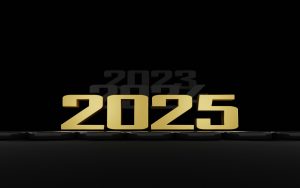Small Language Models vs. Large Models: The Future of LegalTech
In the world of legal technology, language models have revolutionized the way lawyers and legal professionals work. These advanced tools use natural language processing (NLP) and machine learning techniques to assist with various tasks, from contract analysis and case review to legal research and document drafting. However, there has been a growing debate on the use of small language models versus large models in the legal industry. Which one is more efficient? Which one provides better results? In this article, we will delve into the advantages and disadvantages of small and large language models and explore their potential impact on the future of LegalTech.
The Rise of Language Models in LegalTech
With the rapid advancement of technology, the legal industry has undergone a significant transformation in recent years. Gone are the days of manually sifting through stacks of paper and spending hours on legal research. Thanks to language models, lawyers and legal professionals can now streamline their work and improve efficiency.
Language models are trained on large datasets to understand and generate human language. They use deep learning algorithms to analyze, interpret, and respond to natural language commands. In the field of LegalTech, language models have proven to be highly useful, particularly for tasks that require a vast amount of text data.
The Advantages of Small Language Models
Small language models, also known as light models, have gained popularity in recent years due to their efficiency and ease of use. These models have a smaller number of parameters, making them faster and less resource-intensive. This means that they can process data more quickly, allowing legal professionals to get results in real-time. Additionally, small language models are more accessible and affordable, making them suitable for small and mid-sized law firms.
Moreover, small language models are highly customizable, which is an essential feature for the legal industry. Legal data requires more specific and precise language models to ensure accuracy. Small models can be trained on specialized datasets, such as legal documents, to improve their performance in legal tasks. This allows lawyers and legal professionals to fine-tune the models according to their specific needs.
The Limitations of Large Language Models
On the other hand, large language models, such as GPT-3, have also gained significant attention due to their ability to generate human-like text. These models have billions of parameters, giving them a more in-depth understanding of language and context. However, there are some concerns regarding their use in the legal industry.
One of the main limitations of large language models is their high computational cost. These models require extensive amounts of computing power and resources to function, making them less accessible for smaller law firms or solo practitioners. Additionally, training a large language model on specialized legal data is a time-consuming and expensive process.
Moreover, there have been concerns regarding the ethics of large language models. These models can generate text that is indistinguishable from human-written text, which raises questions about their use in legal documents. This can potentially lead to legal issues, particularly in the case of false information being generated by the model.
The Future of LegalTech: A Combination of Small and Large Models
The ongoing debate between small and large language models in the legal industry can be settled by finding a balance. Both types of models have their unique advantages and limitations, and using them in combination can prove to be highly beneficial for legal professionals.
Small language models can provide real-time results and are more accessible for smaller law firms. On the other hand, large models can generate more complex and nuanced text, which can be incredibly useful in certain legal tasks. By combining these two types of models, legal professionals can achieve more accurate and efficient results.
Moreover, researchers are continuously working on improving language models to address their limitations. This will result in more advanced and efficient models that can cater to the unique needs of the legal industry. As the technology continues to evolve, it is safe to say that language models will have a significant impact on the future of LegalTech.
The Bottom Line
In conclusion, small and large language models have their own set of advantages and limitations. While small models are more efficient and customizable, large models provide more comprehensive text generation. The future of LegalTech lies in finding a balance between these two types of models and utilizing their strengths to improve legal processes. As technology continues to advance, it is an exciting time for the legal industry, and language models are at the forefront of this transformation.





